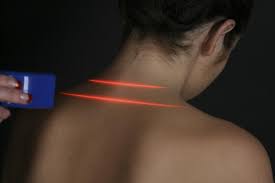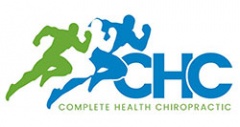
NECK PAIN COLD LASER THERAPY
Neck pain can be a nuisance and sometimes downright aweful to deal with on a regular basis. Some people have cronic neck pain and some have neck pain that comes and goes at times. The cold laser that we use in our office is the erchonia cold laser. This is the gold standard of cold lasers. What we have found and what erchonia has found is that just by lasering someone neck pain you can have a significant reduction in neck pain.
EVALUATION OF LOW-LEVEL LASER THERAPY AT 635nm FOR THE
TREATMENT OF ACUTE AND CHRONIC NECK AND SHOULDER PAIN: A
PLACEBO-CONTROLLED, RANDOMIZED STUDY
Ryan Maloney, Steve Shanks
Phoenix, AZ; Erchonia Corporation, McKinney, TX
neck pain cold laser
Background: Upper extremity chronic pain is a dynamic condition with a multifactorial
etiology and a poorly understood pathogenic mechanism. The most prevalent form of upper
extremity pain is chronic shoulder and neck pain cold laser (cSNP), which affects 10-36% of the
population at some point. Low-level laser therapy (LLLT) has demonstrated preliminary utility
for the treatment of acute and chronic pain. Herein, we evaluated the efficacy of LLLT
delivering a wavelength at 635 nm with an output intensity of 1.0 mW for the relief of cSNP.
Study: Eighty-six subjects qualified and were enrolled in a placebo-controlled, randomized,
double-blind, multi-center study. Degree of Pain rating was recorded using the VAS with O
representing “no pain” and 100 representing “worst pain imaginable.” Linear range of motion
(ROM) was performed to assess patient mobility in the neck-should region using a universal
inclinometer. Participants were evaluated across four time points: pre-procedure, immediately
post-procedure, and at 24 and 48 hours post-procedure. An individual patient success criterion
was defined as a 30% improvement in Degree of Pain rating on the VAS across the two
measurement periods.
Results: Of the 43 participating test patients, 28 (65.1%) met the
individual success criteria with 11.6% of placebo subjects satisfying
the criteria, a difference of 53.5% in the proportion of individual
participants meeting the success criteria between test and sham
groups. Test group participants reported a reduction of -29.02 for
immediate post-procedure Degree of Pain ratings on the VAS
(P<0.0001), compared with a 4.91 reduction on the VAS for control
subjects. (P>0.05). Test group participants demonstrated a
significant improvement in linear range of motion for the right and
left sides of the neck and right and left sides of the shoulder.
Conclusion: These data demonstrate the clinical utility of LLLT at
635 nm for the treatment of cSNP.
